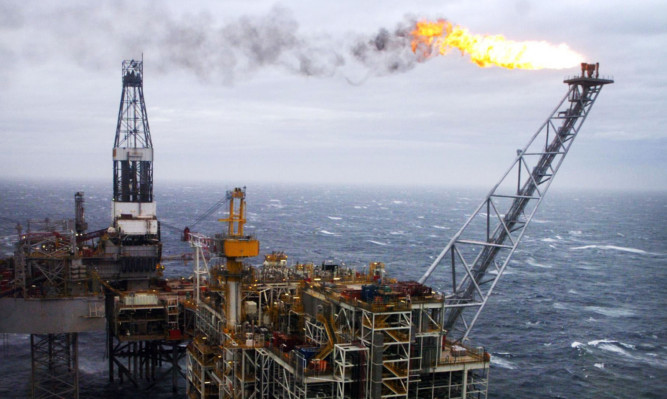Scotland’s deficit reached almost £15 billion in the last financial year after revenues from North Sea oil and gas fell by more than 50%, figures have revealed.
The Scottish Government published its latest data on revenue and expenditure, which showed a deficit of £14.9 billion for 2014-15 when a geographic share of North Sea revenues is allocated to Scotland.
That amounts to 9.7% of Scottish GDP, compared with the overall UK deficit of 4.9% of GDP.
North Sea revenue fell from more than £10.9 billion in 2011-12 to less than £4.8 billion in 2013-14, before dropping to £2.25 billion last year, according to the data.
Opposition parties said the statistics highlighted the “devastating impact” a vote for Scottish independence would have had, with the country’s finances impacted by a “volatile and unpredictable source of income”.
But First Minister Nicola Sturgeon insisted “the foundations of Scotland’s economy are strong”, and stressed Scotland’s onshore economy is “doing well”, with revenue growth of 3.2%.
The Government Expenditure and Revenue Scotland (GERS) figures also showed that income from tax was £10,000 per person – that included a geographic share of oil revenue. It represented 8.2% of revenue, slightly below the UK figure.
In every previous year, Scottish tax receipts per person have been higher than in the rest of the UK.
Expenditure was £12,800 per person, or 9.3%. That was £1,400 per person more than the UK average.
Scotland Office minister Andrew Dunlop said: “These figures show that Scotland is facing challenging economic times, in particular because of the drop in oil price, and demonstrate the value of the broad shoulders of the United Kingdom.”
Scottish Labour leader Kezia Dugdale said: “These figures from the SNP Government show once and for all the devastating impact leaving the UK would have had on Scotland’s finances.”
Scottish Liberal Democrat leader Willie Rennie said Ms Sturgeon had made a “fatal error of judgment” in “recommending that Scotland should be independent even though its finances would be based on such a volatile and unpredictable source of income”.
Scottish Conservative finance spokesman Murdo Fraser said: “These figures today illustrate the impact of the falling oil price on Scotland’s balance sheet.”
But Ms Sturgeon said: “Taken in the context of the wider economic environment, which has been impacted by muted global demand, falling oil prices and more difficult conditions for manufacturers, the economy has remained resilient with record levels of employment, positive economic growth and growing exports.
“This shows the foundations of Scotland’s economy are strong and that we have a strong base to build our future progress upon.”
She added: “Despite the fact the onshore economy accounts for more than 90% of Scotland’s output, Scotland is clearly not immune to the problems being felt by the oil industry internationally.
“It is important to bear in mind that these are figures from just one year and while we are doing what we can to mitigate these problems, this needs immediate action from the UK Government.”
Ms Sturgeon emphasised the strength of the onshore economy, adding: “It has been true over the past five years, and it will be true to an even greater extend over the next five years, that the decline in oil revenues, assuming the oil price stays where it is, that that growth in onshore revenues will significantly exceed the fall in oil revenues.”
She said more powers for Scotland would provide “more ability to grow and diversify our tax base”.
“This (GERS) is a statement of the Scottish economy under the status quo, this is not a statement of the Scottish economy under full fiscal autonomy or independence,” she said.
“Arguments for greater fiscal and economic powers for Scotland are so that we have greater ability to change some of the underlying assumptions (on which GERS is based).”
